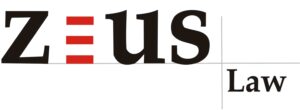Labelling and Packaging for Drugs: Ensuring Safety and Compliance
By Jayshree Navin Chandra and Shreya Pandey
In the pharmaceutical field, the significance of proper labelling and packaging cannot be overstated. These aspects are helpful in guaranteeing the safety, efficacy, and responsible use of pharmaceutical products. The Drugs and Cosmetics Act, 1940 (“Act”), and, the Drugs and Cosmetics Rules, 1945 (“Rules”) set the standards and guidelines that pharmaceutical manufacturers are required to adhere to when labelling and packaging drugs.
LABELLING REQUIREMENTS: Part IX of the Drugs and Cosmetics Rules, 1945 plays a central role in outlining regulations for labelling and packaging of drugs. No person is allowed to sell or distribute drugs, without meeting the labelling rules. This guarantees accurate information on labels before sale or distribution (Rule 95). Rule 96 provides a thorough overview of the requisites for drug labelling in India. It mandates that vital information such as the drug’s proper name, net content, content of active ingredients, particulars of the manufacturer, batch numbers, manufacturing license numbers, and expiry dates, be imprinted or written in indelible ink on both the innermost container label and external coverings. It also provides for additional labelling requirements for certain drug categories such as imported drugs, contraceptives, vaccines and surgical items. In essence, it reinforces accountability within the pharmaceutical industry.
Rule 97 of the Drugs and Cosmetics Rules, 1945, delves into labelling regulations for medicines, outlining directives based on their ingredients and intended use. For instance, if a medicine incorporates a substance stipulated in Schedule G, it necessitates affixing the word “Caution” onto its label. Similarly, if it integrates a component enumerated in Schedule H, it necessitates labelling with an “Rx” symbol. Should a medicine’s formulation align with Schedule H and subsequently falls within the purview of the Narcotic Drugs and Psychotropic Substances Act, 1985, it mandates labelling a distinctive red “NRx” symbol. In the event that the drug comprises a substance specified in Schedule X then it is to be labelled with a red “XRx” symbol and if it contains a substance specified in Schedule H1 then it needs to be labelled with a red “Rx” symbol and a caution. For external medicines, the “FOR EXTERNAL USE ONLY” labelling is required, while veterinary medicines should state “Not for human use; for animal treatment only” and those for food-producing animals must indicate the drug’s withdrawal period. Medicines that are prepared for the treatment of human ailments, if contain industrial methylated spirit, must state “For External Use only”, and strong substances from Schedule X must have a red label. This rule makes sure medicines have the right labels for safety and proper use.
Rule 102 mandates labels for non-sterile surgical ligatures and sutures, indicating their non-sterile status. Rule 103 further stipulates that the label of patent or proprietary medicines must incorporate the manufacturer’s name, address, and the true formula or ingredient list, imprinted or written in indelible ink. Rule 104 requires the indication of “I.P.” and recognized abbreviations on the label of the drug to signify adherence to pharmacopeia standards. Rule 104A prohibits altering inscriptions on drug containers, labels, or wrappers unless sanctioned by the Licensing Authority.
PACKAGING REQUIREMENTS: Rule 105 covers the packaging requirements for drugs intended for retail sale in India. The rule defines specific pack sizes for various types of drugs, ensuring consistency and proper usage. For instance, tablets/capsules should have pack sizes that either match the number of units (if less than 10) or are multiples of 5 (if above 10). Liquid oral preparations, paediatric oral drops, eye/ear/nasal drops, and eye ointments must adhere to predefined pack sizes. However, certain exceptions exist, including imported formulations, preparations for veterinary use, export, certain specific forms of medicines, hospitals, registered medical practitioners, nursing homes, and physician’s samples. Moreover, new drug pack sizes not covered under these regulations are subject to examination and approval by the Licensing Authority. Oxytocin injections must be in single unit blister packs, and Diclofenac injections for human use must be in single unit dose packs as well. Rule 105A provides for the packaging criteria for Schedule X drugs, ensuring their packaging adheres to appropriate quantities while allowing certain exceptions for hospital and dispensary supplies within stipulated boundaries. Furthermore, Rule 106 firmly prohibits drugs from making claims about preventing, or curing the diseases listed in Schedule J. These collective provisions synergize to ensure responsible, transparent, and safe distribution of drugs within the Indian market.
CONCLUSION
The provisions of the Act and the Rules safeguard public health by ensuring accurate information, preventing misleading practices, and promoting the safe and informed use of drugs. Manufacturers and stakeholders in the pharmaceutical industry must adhere to these regulations to uphold the highest standards of patient safety and product efficacy.
(This Article is solely for information purposes, does not constitute legal or professional advisory, and should not be relied upon or used as a substitute for legal advice from an attorney.)
 About the Authors: Jayshree Navin Chandra, Senior Partner at ZEUS Law, has been a practicing lawyer since 2001 with extensive corporate and transactional advisory experience. She advises and represents clients ranging from Fortune 500 companies to start-ups as well as Central and State Government departments and public bodies in a wide range of domestic and cross-border transactions, across industries in practice areas including Corporate and Company Law, M&A and Joint Venture, Private Equity, FDI & FII, Real Estate and Infrastructure, Data privacy and protection, Intellectual Property & Commercial Law Advisory.
About the Authors: Jayshree Navin Chandra, Senior Partner at ZEUS Law, has been a practicing lawyer since 2001 with extensive corporate and transactional advisory experience. She advises and represents clients ranging from Fortune 500 companies to start-ups as well as Central and State Government departments and public bodies in a wide range of domestic and cross-border transactions, across industries in practice areas including Corporate and Company Law, M&A and Joint Venture, Private Equity, FDI & FII, Real Estate and Infrastructure, Data privacy and protection, Intellectual Property & Commercial Law Advisory.
Ms. Shreya Pandey is an Associate at ZEUS Law and works in the Corporate and Commercial practice vertical.
 ZEUS Law Associates is an ISO-certified full-service corporate commercial law firm with a team of dedicated and experienced lawyers well-versed in handling domestic and cross-border transactions across sectors, jurisdictions, and regulatory landscapes. The firm’s practice areas include Corporate and Company Law, M&A and Joint Venture, Private Equity, FDI & FII, Real Estate and Infrastructure, Intellectual Property & Commercial Law, Litigation, Alternate Dispute Resolution, Indirect Tax and NRI Services.
ZEUS Law Associates is an ISO-certified full-service corporate commercial law firm with a team of dedicated and experienced lawyers well-versed in handling domestic and cross-border transactions across sectors, jurisdictions, and regulatory landscapes. The firm’s practice areas include Corporate and Company Law, M&A and Joint Venture, Private Equity, FDI & FII, Real Estate and Infrastructure, Intellectual Property & Commercial Law, Litigation, Alternate Dispute Resolution, Indirect Tax and NRI Services.



